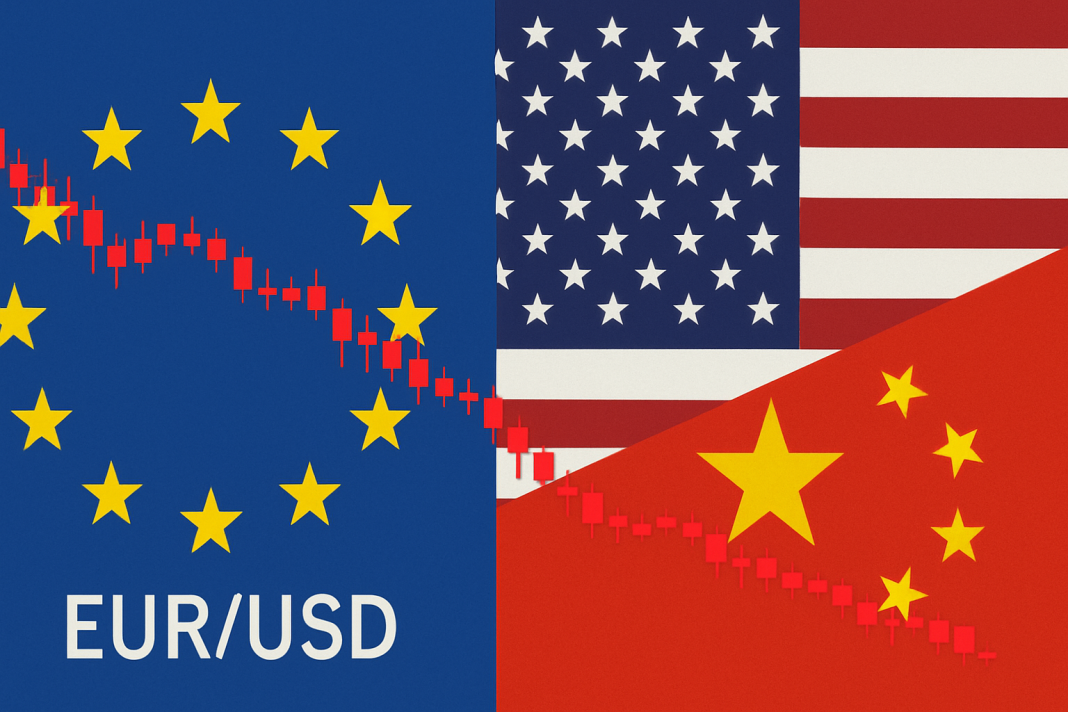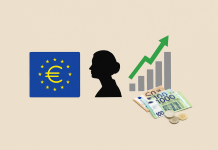Introduction
In the ever-evolving world of foreign exchange, geopolitical shifts can create seismic reactions in currency pairs. One of the most closely watched pairs, the euro to US dollar (EUR/USD), has experienced significant bearish momentum in recent days following the announcement of a new trade agreement between the United States and China. This development, while largely diplomatic and economic in nature, has had notable technical implications for the EUR/USD pair, causing traders and analysts to revise their forecasts. The recent trade accord, viewed as a breakthrough after months of stalled negotiations, has re-energized the US dollar while simultaneously exerting downward pressure on the euro.
As of mid-May 2025, market participants are witnessing renewed optimism surrounding the greenback. This optimism stems from expectations of enhanced global trade flows, increased economic cooperation between two of the world’s largest economies, and the potential easing of inflationary pressures, which may influence future policy decisions by the Federal Reserve. Meanwhile, the euro has struggled to maintain its position amid a stronger dollar environment and cautious signals from the European Central Bank (ECB).
Background: The Significance Of The US-China Trade Agreement
The US-China relationship has long influenced global markets, especially the currency landscape. The agreement signed in early May 2025 is seen as a major diplomatic achievement, aimed at resolving long-standing trade imbalances and establishing clearer rules for bilateral economic activity. Among the key components of the agreement are reduced tariffs on hundreds of goods, commitments to intellectual property protection, and a mutually agreed framework for digital trade standards.
The signing of this agreement triggered a positive reaction across equity markets, with Asian and US indices surging in response. The ripple effects extended into the forex market, particularly bolstering the US dollar, as investors turned toward the greenback as a safe and increasingly attractive asset.
While the agreement is broadly considered a win-win for both nations, from a forex perspective, the implications are asymmetrical. The dollar gained strength not only from improved investor sentiment but also from expectations that a boost in US exports could support domestic GDP growth. By contrast, the eurozone did not benefit directly from the agreement, leading to a reallocation of capital away from European assets and into US-denominated investments.
Technical Outlook: Bearish Patterns Confirm Euro Weakness
Technical indicators offer clear evidence of the bearish momentum developing in the EUR/USD currency pair. One of the most prominent patterns identified in the latest analysis is the breakdown below the key support level at 1.1350, which had served as a critical psychological and technical barrier over the past month. The breach of this level, confirmed by successive daily closes beneath it, has opened the door for a deeper decline.
Moreover, the Relative Strength Index (RSI) on the daily chart has moved below the 50-mark, a signal that bears are gaining control. Additionally, a bearish crossover in the Moving Average Convergence Divergence (MACD) indicator reinforces the notion of a momentum shift. The 50-day exponential moving average (EMA) has started to turn downward, further cementing the pair’s short-term downtrend.
Analysts are now eyeing the next support zone near the 1.1200 handle. This level is seen as both a technical and psychological floor, having acted as a springboard for bullish recoveries in previous months. Should the current bearish momentum persist, traders may begin to price in further downside risks toward 1.1150 and beyond.
US Dollar Strength: The Dominant Driver
The strength of the US dollar in recent weeks is a primary contributor to the EUR/USD’s bearish trajectory. The dollar index (DXY), which measures the greenback against a basket of major currencies, has seen steady gains, reaching a three-month high. This upward move reflects both improved investor confidence and a series of stronger-than-expected US economic data releases, including retail sales, manufacturing output, and labor market figures.
Moreover, the Federal Reserve’s position remains slightly more hawkish compared to its European counterpart. While Fed Chair Jerome Powell has acknowledged progress in containing inflation, he has also emphasized the need for vigilance. Markets are pricing in the possibility of one final rate hike before a potential pause, whereas the ECB is facing increased pressure to cut rates amid sluggish eurozone economic activity.
This policy divergence creates a favorable environment for the US dollar, as higher interest rates attract yield-seeking investors. Consequently, EUR/USD has struggled to maintain upward traction, and the prevailing bias continues to lean downward unless major fundamental shifts emerge.
Eurozone Challenges Amplify Pressure
While dollar strength is undoubtedly a key narrative, the euro is also contending with its own set of challenges. Economic data from the euro area has been mixed at best. Industrial production remains under pressure, and the service sector—traditionally a strength for the eurozone—has shown signs of stagnation. The inflation picture is complicated, with headline CPI easing due to lower energy prices but core inflation remaining sticky, which clouds the ECB’s policy outlook.
Adding to the headwinds are geopolitical tensions in Eastern Europe, specifically involving Ukraine and broader EU foreign policy challenges. Although these events do not directly impact the EUR/USD exchange rate, they contribute to a climate of uncertainty that deters capital flows into the euro.
Consumer sentiment in major eurozone economies such as Germany and France has also dipped, with purchasing managers’ indexes (PMIs) suggesting contraction in key sectors. This combination of weak growth, policy uncertainty, and external shocks makes the euro vulnerable to sharp corrections, especially when paired against a strengthening dollar.
Sentiment Analysis And Market Positioning
From a sentiment standpoint, institutional positioning data indicates a growing number of traders adopting bearish stances on the euro. According to the latest Commitment of Traders (COT) report, net short positions on the EUR/USD pair have increased over the past two weeks. Hedge funds and asset managers are reportedly rotating portfolios to reduce euro exposure and increase dollar holdings in light of the trade accord and rising US yields.
Retail trader data from platforms such as IG and OANDA also show a majority of long positions on EUR/USD, which, in contrarian terms, suggests a further downside is more likely. Typically, when the retail crowd becomes excessively bullish, the probability of a bearish continuation increases.
Volatility in the forex markets has been relatively contained, but implied volatility on EUR/USD options has started to rise. This suggests traders are preparing for a potentially volatile move—likely to the downside—especially with upcoming macroeconomic events such as the US CPI release and ECB policy meeting on the horizon.
Looking Ahead: Key Levels And Catalysts
Looking forward, several upcoming events could either reinforce or challenge the current bearish bias in EUR/USD. These include:
US Consumer Price Index (CPI) – May 15, 2025
A higher-than-expected inflation reading could solidify expectations of another Fed rate hike, supporting the dollar further.
ECB Monetary Policy Meeting – May 23, 2025
Any hint of dovishness or talk of potential rate cuts could send the euro tumbling.
German GDP Data – May 20, 2025
As the eurozone’s largest economy, signs of contraction in Germany would weigh heavily on the euro.
Geopolitical News Flow
Surprises from the ongoing Middle East tensions, energy supply disruptions, or political instability within EU member states could act as downside risks for the euro.
Technically, traders will be watching the 1.1250 to 1.1200 range for signs of support. A sustained break below this zone could trigger stop-loss orders and accelerate the decline. Conversely, a break back above 1.1350 would signal a possible reversal and invalidate the current bearish thesis.
Conclusion
The EUR/USD currency pair remains under notable bearish pressure in the wake of the US-China trade agreement. The strengthening of the US dollar, fueled by improving economic prospects and hawkish policy expectations, has placed the euro on the defensive. Meanwhile, technical signals and sentiment indicators support the notion of further downside toward the 1.1200 level.
Although short-term volatility is likely, the broader trend appears clear. Unless the eurozone can produce stronger data or the ECB adopts a more hawkish tone, the EUR/USD pair is likely to remain on a downward trajectory in the near term. Traders should monitor upcoming economic releases and policy statements for potential catalysts that could influence the pair’s direction.




